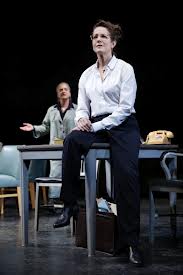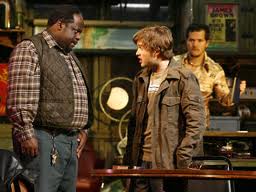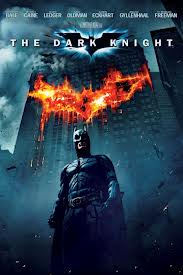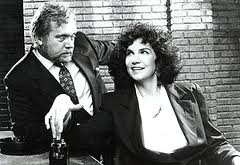 Many people, and I count myself among them, often find themselves trying to quantify the totality of theatre activity in the United States and, within that, to delineate differences between the various sectors: commercial, not for profit, educational, amateur and so on. While absolute figures may prove elusive, there are a handful of studies that provide a reasonably good picture of professional production, lending perspective to any discussion about the reach of theatre in America.
Many people, and I count myself among them, often find themselves trying to quantify the totality of theatre activity in the United States and, within that, to delineate differences between the various sectors: commercial, not for profit, educational, amateur and so on. While absolute figures may prove elusive, there are a handful of studies that provide a reasonably good picture of professional production, lending perspective to any discussion about the reach of theatre in America.
The Broadway League, the professional association of theatre producers in the commercial sector, both Broadway and touring, generates multiple reports annually; its recent release of its annual demographic figures last week focused a lot of attention on Broadway and who’s attending those productions. The Theatre Communications Group (TCG), the national service organization of the country’s not-for-profit theatres (NFPs), produces its annual Theatre Facts report, the most comprehensive picture of activity across a variety of NFP companies based on an comprehensive fiscal survey.
While the methodologies may vary, and the TCG report isn’t 100% inclusive and includes extrapolation, looking at the two is very informative as a means of comparing and contrasting these two sectors, which inexplicably to me seem to be always addressed discretely, rather than as parts of a whole.
Here’s the main snapshot:
| 2010-2011 Season | ||
|
Commercial |
Not-for-Profit |
|
|
(B’way League) |
(TCG) |
|
| Revenue |
$1,884,000,000 |
$2,040,000,000 |
| Attendance |
25,630,000 |
34,000,000 |
| Productions |
118 |
14,600 |
| # of performances |
20,680 |
177,000 |
I was surprised to find that in terms of revenue, the two sectors are quite close; the NFPs edge commercial production by $36 million (for the purpose of this summary, I have merged earned and contributed income in the NFPs). Attendance between the two shows the NFPs ahead by a bit over $8 million, which is almost 33%. But the real difference is in the number of productions, which demonstrate that the production pace in NFP theatre is vast compared to the commercial arena, and the total number of performances almost eight times greater.
Obviously caveats quickly arise: most of the NFP production is in houses of 500 seats or less, while that’s the minimum size in the commercial world, where theatres can reach over 3,000 seats. It takes only a handful of productions in commercial to generate nearly equal revenue to the entire NFP sector; that’s because a single production might play throughout the season, either on Broadway or on tour, while each NFP might produce a half-dozen shows in a year. Though production figures aren’t available, the budget of a single commercial musical might fund a mid-sized LORT theatre for two seasons, let alone countless storefront or LOA companies for years.
But what’s perhaps most interesting is that, operating under the reasonable assumption that each show has one director, one set designer, on lighting designer, one costume designer and one sound designer, those working in those fields are employed almost entirely by the NFP companies, since there are so very few opportunities in commercial theatre. Indeed, its not uncommon for the same designer in the select group that secure Broadway shows to do two or three in a season, and for those same designs to go out on tour, so when it comes to individuals, that count of 118 grows even smaller.
In terms of the aggregate economic force of Broadway, the League’s numbers show that Broadway and commercial touring generates significant income from a relatively small amount of shows. The TCG numbers show a more granular reach, with thousands of productions just edging the commercial world to reach a similar figure. But it’s the NFPs that are providing the vast majority of theatrical employment.
Let’s look at another measure of employment, specifically when it comes to actors. I think it’s a safe assumption to say that with musicals dominating commercial production, the cast size of an average show must surely outpace those found in resident theatre. Drawing upon employment data from Actors Equity for the same 2010-11 season, here’s the snapshot:
| AEA Employment | 2010-2011 Season | |
|
Work Weeks |
Earnings |
|
| Production contract | ||
| B’way & tours |
73,505 |
$183,184,564 |
| LORT |
59,982 |
$52,583,175 |
| Developing Theatre |
46,116 |
$6,344,839 |
| Chicago Area |
7,438 |
$4,252,738 |
| Bay Area Theatre |
1,290 |
$644,749 |
| Total NFP |
114,826 |
$63,825,501 |
There’s obviously a staggering difference in compensation for performers in the two sectors, since with 40,000 fewer work weeks, the commercial productions yielded almost three times the earnings for its actors as the NFP companies provided. While certainly star salaries may have had something to do with this, it’s more likely because production contract minimum typically exceeds the top salary at any of our not-for-profit companies.
So what have we found? Resident, not for profit theatres provide the foundation for the vast amount of theatrical activity in the United States, employing the lion’s share of the artists and presumably staffs as well, and playing to about 30% more patrons. When it comes to overall sector income, the two are extremely close (although the inclusion of more of Equity’s smaller contracts might tip this slightly further). But for those fortunate enough to secure employment as actors or stage managers in commercial productions, the compensation far outstrips what’s paid by resident companies.
Next time you want to make a generalization about the difference between commercial and not-for-profit theatre, here’s your broad-based data to draw from. But there’s lots more where this came from, and I urge everyone in the field to review it, to understand both the divergences and similarities, and to better understand American theatre not as an array of silos, but as a whole.
* * *
Notes:
- Data from the Broadway League is drawn from their Broadway Season Statistics summary and their Touring Broadway Statistics summary, as well as information taken from their IBDB and provided by their press office.
- As previously indicated, revenue for NFP companies is inclusive of both box office and contributed income, since both are required to achieve the level of production represented within; commercial theatre may have some amount of sponsorship income, but it wasn’t broken out in the Broadway League survey, nor did I treat capitalization as income.
- There are almost two dozen AEA contracts not represented in the actor workweek summary, because I am not familiar enough with each contract to properly categorize it. The contracts included represent almost 2/3 of all AEA employment. It’s worth noting, by the way, that the Disney World-AEA contract covers 5% of all AEA annual work weeks, but does not factor in here.
- While the Broadway League has assembled its numbers for 2011-12, and as I was writing, AEA indicated that their figures for that period would be released imminently, 2010-2011 remained the period of comparison because that is the most recent TCG data available. It should be noted that once every seven years, the League has to compile its data into a 53, instead of 52, week season; 2010-11 was such a year, so the comparison of the data is imprecise, giving a quantitative edge to the commercial numbers.
















